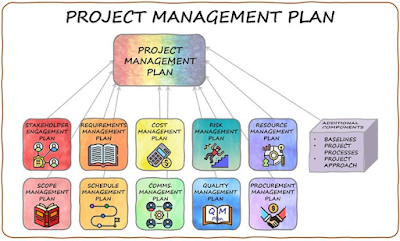[3 minutes reading]
The Project Management Plan is defined as the document that describes how the project will be executed, monitored, controlled, and closed. In my previous post I explained the early steps before preparing it.
I would say that one of the most important keys to preparing a good Project Management Plan is to understand why this document is needed and how it could really help the success of the project.
This document, as mentioned at the top of this post, describes the rules for the execution of the project. We need to understand that in a project there might be many people involved and many phases to execute. It is key to have a common point of understanding of the rules for the management of the project, so anyone could read them when needed. Rules could change of course, but always under some kind of control.
The Project Management Plan could include the following important sections and components:
- Scope management plan. Establishes how the scope will be defined, developed, monitored, controlled, and validated.
- Scope baseline. The scope baseline provides the project and product definition.
- Requirements management plan. Establishes how the requirements will be analyzed, documented, and managed.
- Project life cycle description. The project life cycle determines the series of phases that a project passes through from its inception to the end of the project.
- Development approach. The development approach defines whether waterfall, iterative, adaptive, agile or a hybrid development approach will be used.
- Schedule management plan. Establishes the criteria and the activities for developing, monitoring, and controlling the schedule.
- Schedule baseline. The schedule baseline is used to assess the impact of the changes in the project schedule.
- Cost management plan. Establishes how the costs will be planned, structured, and controlled.
- Cost baseline. The cost baseline is used to assess the impact of the changes to the project cost.
- Quality management plan. Establishes how an organization's quality policies, methodologies, and standards will be implemented in the project.
- Resource management plan. Provides guidance on how project resources should be categorized, allocated, managed, and released.
- Communications management plan. Establishes how, when, and by whom information about the project will be administered and disseminated.
- Risk management plan. Establishes how the risk management activities will be structured and performed.
- Procurement management plan. Establishes how the project team will acquire goods and services from outside of the performing organization.
- Stakeholder engagement plan. Establishes how stakeholders will be engaged in project decisions and execution, according to their needs, interests, and impact.
- Change management plan. Describes how the change requests throughout the project will be formally authorized and incorporated.
Not all these sections are mandatory. Of course, tailoring practice depends on the kind of project and complexity, company culture, and other factors. But in general, I consider it good practice to have all of these sections included as they cover most of the key important aspects of a project.
---
Bibliography:


No comments:
Post a Comment